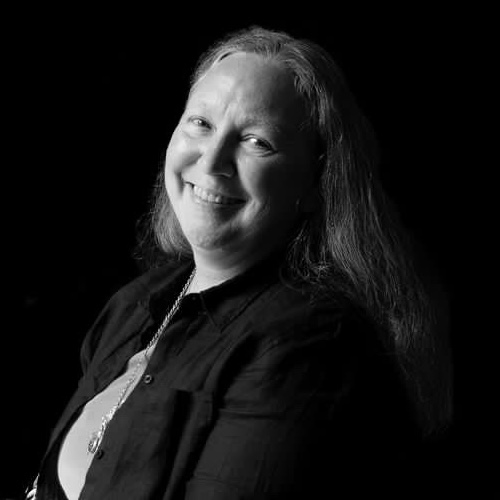There’s nothing better than the taste of a fresh vegetable picked straight from your garden. Snap peas off the vine, a juicy tomato still warm from the sun, or a carrot fresh out of the ground, it’s all great.
Growing vegetables isn’t all that difficult, either. Yes, there are “ideal” conditions for reaping the highest yields, but most vegetables are pretty forgiving.
Even if everything isn’t perfect, your plants will likely produce something. That said, here are the steps to start your own vegetable garden.
1 – Choose A Site
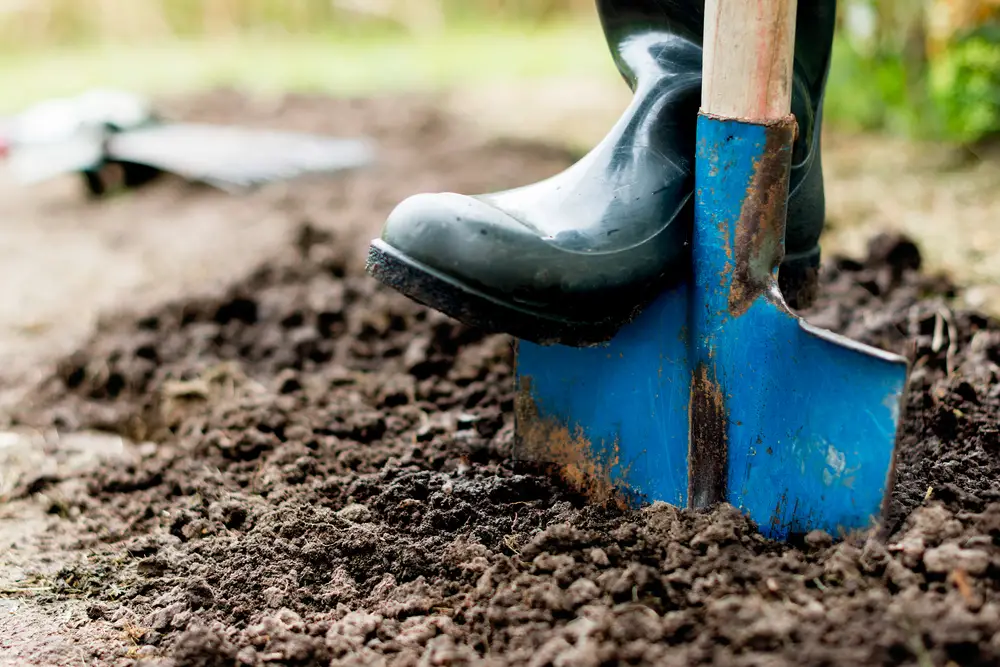
The first step you need to take to start your vegetable garden is choosing where to put it.
Choosing such a location means looking at the sun, soil, and drainage in different parts of your backyard. All these factors work together to support plant growth.
You’ll have to match your choice of what vegetables to grow with what garden conditions you have if you want a successful harvest.
With that in mind, here’s what to consider and do.
Make Sure It’s Sunny
Most vegetables need at least 6-8 hours of direct sunlight daily to grow well and produce a good crop. A few (mostly leafy greens like lettuce, kale, and spinach) can tolerate a little shade.
In regions with extremely hot summer growing seasons, you may want to choose a site that gets morning sun and is shaded by about 2:00 in the afternoon.
Make Sure You Have Good Soil
Vegetables like soil that’s well-draining, loose, and has sufficient organic matter and nutrient content.
This is important to get right because soil is perhaps the most essential ingredient for a successful vegetable garden next to sunlight. Your soil feeds your plants, so it needs to be the right kind.
You may see where this is going, but you’ll need to learn about your soil to grow a successful vegetable garden.
Test Your Soil
A professional soil test is the only way to know exactly what kind of soil you have and what nutrients it contains. The test results will tell you whether or not you need to amend your soil with organic matter or nutrients (fertilizer) and how much you may need to add. University extension offices, government agencies, or private labs offer them, depending on your location.
You can also use a store-bought test kit to determine your soil’s pH and basic nutrients: nitrogen (N), phosphorus (P), and potassium (K). These tests aren’t as accurate as the ones from the aforementioned groups, but they can give you a place to start.
Additionally, you can also start your vegetable garden without a soil test and see how things grow. Make note of successes and failures to plan for the following year if you decide to go that route, and have the mindset that you could very well be facing a lot of the latter.
Last, you can literally get a feel for your soil to tell how much clay or sand is in it.
Take a bit of wet soil and rub it between your thumb and fingers. Does it feel slippery (clay soil) or gritty (sandy soil)? If it feels somewhere in between, then your soil has a good balance of clay and sand.
Depending on the findings from your soil testing, you may need to amend your soil to improve conditions for vegetables. Be aware that loosening up heavy clay soil with amendments can take several years. You might be better off creating rows of mounded, well-draining soil to plant your vegetables on top of your garden bed. Another option would be building raised beds that you can fill with soil more suited to growing vegetables.
You can also choose crops that can grow in the conditions you’ve got. If your soil has lots of clay but isn’t too dense, vegetables with shallow root systems would be good options, such as lettuces, kale, swiss chard, beans, squash, or a shorter variety of carrots.
Make Sure The Soil Is Well-Draining
Vegetables like well-draining soil. Soil that stays too wet for too long will rot root vegetables and kill the roots of others.
Avoid spots in your garden that sit wet long after a heavy rain. Also, avoid spots where heavy machinery or foot traffic has packed the soil down.
If all the sunny spots in your garden have poor drainage, you may need to opt for mounded rows or raised beds to give your vegetables good drainage.
How To Test Your Soil Drainage
Thankfully, there’s an easy way to test the drainage of your soil.
First, dig a hole about 12 inches (30 centimeters) deep and wide. Fill it with water, cover it, and leave it overnight.
The next day, if there’s still water in the hole, you know you have poor-draining soil, and you can skip the next steps of the soil test!
If all the water has drained away, fill the hole again and track how long it takes to drain away. It might take just a few minutes or several hours.
Start by checking it after about 10 minutes. How long it takes will depend on what sort of soil you have:
- If the hole drains within a few minutes to an hour after filling it, your soil drains too well. It’s probably very sandy (or rocky) soil and not ideal for vegetables.
- If it takes between about 30 minutes to 3 hours for the hole to drain, the soil has good drainage for most vegetables.
- If the hole drains in more than 3 hours, your soil is considered poor-draining and probably won’t be good for growing vegetables.
As mentioned before, mounded rows or raised beds can help with this.
Consider Fertilizer
When it comes to fertilizer, the saying “too much of a good thing” applies. Adding too much can be as bad or worse for a plant as not getting enough.
Before choosing a fertilizer for your vegetable garden, check the soil test results to see the nutrient levels in your soil and what you might need to add.
If you don’t do a soil test, start the season without fertilizer and see how your vegetables grow. Monitor their growth during the season.
If you don’t think they’re doing well (or they don’t look as robust as the ones in your neighbor’s garden), get advice from your local garden center. There are lots of reasons besides fertilizer why vegetables aren’t growing well.
Also, be aware that some vegetables need specific nutrients more than others. So, getting to know the needs of the specific crops you plan to grow is essential.
Choose A Site Protected From Wind
Plants dry out faster in windy conditions, just like our skin. Also, wind can damage stalks on taller vegetables or vining varieties grown on supports.
Choose A Site You Can Easily Water
It may seem obvious but is often forgotten: choose a site you can easily water, whether that’s with a hand-held hose, drip irrigation, or soaker hose.
Unfortunately, more than one gardener has lost more than one vegetable crop from being too tired to haul a hose too far or because the hose wasn’t long enough.
2 – Choose What To Plant In
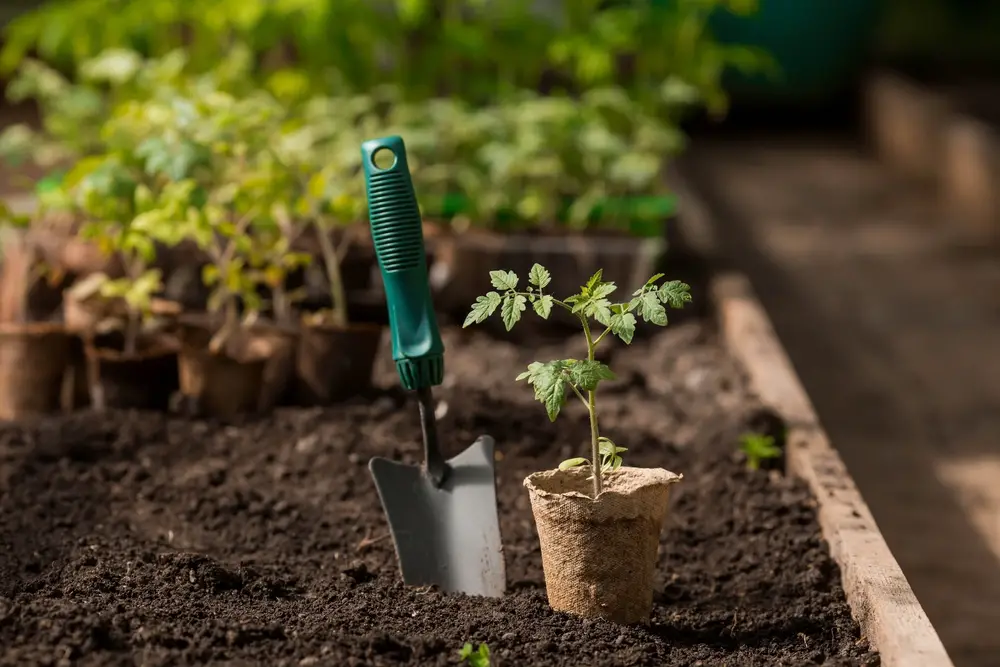
The second step you need to take to start your vegetable garden is deciding whether to plant your vegetables directly into your garden soil or raised garden beds.
Benefits and drawbacks exist for both.
Benefits And Drawbacks Of Raised Garden Beds
Planting directly into the garden soil (level ground) is generally the preferred choice if you have good quality soil with good drainage.
If you have poor-quality soil or poor drainage or have mobility issues that make gardening at ground level difficult, then raised beds are an excellent gardening problem-solver.
The term “raised beds” refers to either open-sided mounds of soil (for single plants or in longer planting rows) on top of the garden soil or raised soil on top of the garden soil contained within sides made with wood or cinder blocks.
The benefits of raised garden beds include:
- You can control soil quality to overcome poor garden soil conditions (drainage, soil quality)
- You can build them to a height easier/more comfortable to access than in-ground beds
- The soil warms up faster in spring
The drawbacks of raised garden beds include:
- May need to be rebuilt every few years as the mounds of soil settle or to replace materials used to build the sides
- They dry out faster than level garden beds and may need to be watered more frequently
3 – Choose The Right Size Garden
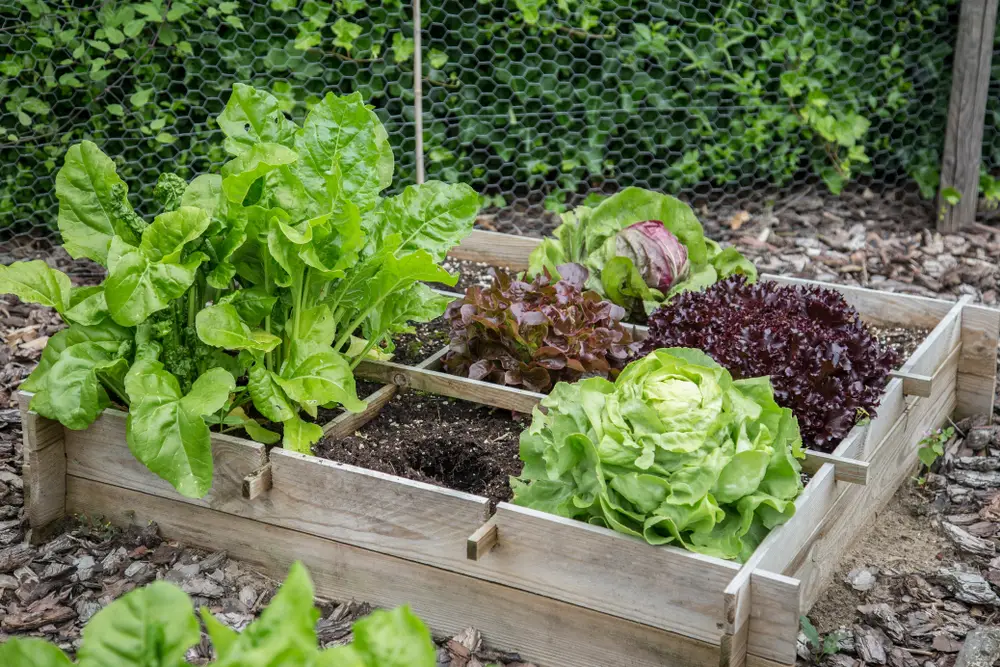
It’s always best to start with a garden bed that is the size you can manage if you’re new to vegetable gardening. Go with one that’s 8×10 feet (2.4×3 meters) for garden soil. Go with one that’s 4×8 feet (1.2×2.4 meters) for a raised garden bed.
The key to planning the size of the beds is to think about how far you can reach. This is essential to consider for weeding around your plants and harvesting.
A good rule to follow is about 2 feet (0.6 meters) in from the bed’s edge.
So, if your garden bed is 8×10 feet (2.4×3 meters), you’ll need to put a path lengthwise down the middle so you can reach everything in the center.
Alternatively, leave enough space to comfortably walk between all the planted rows once the plants have filled in.
4 – Get Information About Your Hardiness Zone And Growing Season
This information is imperative to learn. You’ll need to know the following:
- Your hardiness zone
- Climate information
- Your spring/fall frost dates (also known as last and first frost dates)
- Whether or not you’re in a microclimate and what it is
Knowing this information allows you to choose vegetables that will be ready for harvest before the first hard frost kills them off.
To determine this, look for “days to maturity” on plant labels and seed packets.
5 – Get The Proper Tools
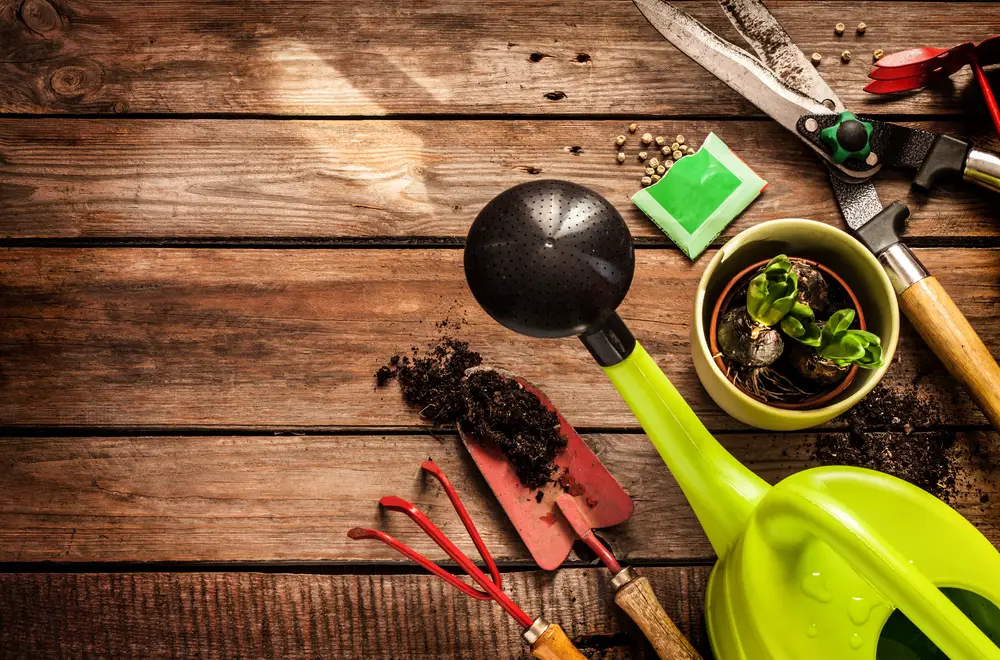
There are all sorts of gardening tools on the market. Some are essential, others may make things easier, and others are just extras. What tools to choose often comes down to personal preference and what tasks you intend to work on in the garden.
There’s a tool for every task! To start a vegetable garden, the basic tools you’ll need are:
- Garden gloves are a must to protect your hands when working the soil or pulling weeds. Soil in urban landscapes can sometimes hold old rusty nails or even small shards of glass. And some weeds, like thistles or stinging nettles, can cause skin irritation.
- Garden trowel to dig small holes to plant your vegetable starter plants or make shallow trenches to plant seeds.
- Spade for digging larger holes or adding soil amendments.
- Hoe for weeding. There are hand-held options or ones with long handles you can use while standing upright. Hand-held options are good for working closely around young plants, while you can use long-handled hoes to weed between plants.
- Rake for spreading mulch or top-dressing with compost
- Knee pads or kneeling pad for comfort. All garden tasks, from planting to weeding, are easier when you’re comfortable.
- Garden stakes and string to secure and support taller plants
6 – Choose What To Plant
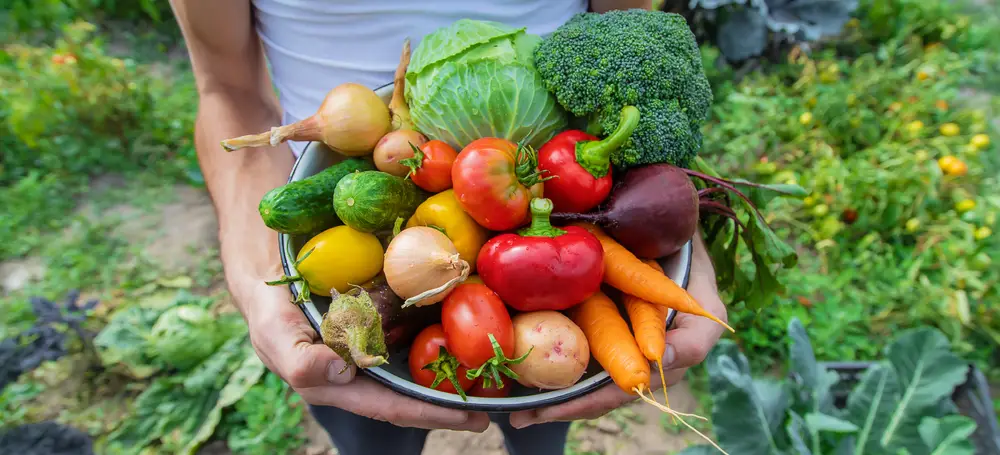
Taking care of all the above gives you the confidence to choose what to plant in your garden because you’ll know what vegetables will do best there.
For sites with full sun (more than 6 hours of direct sun in a day), choose vegetables like tomatoes, beans, cucumbers, squash, carrots, or potatoes—basically, anything you pick off a plant or pull out of the ground.
As a quick side note, yes, some of the aforementioned vegetables are actually fruits people treat as vegetables. For the sake of that consistency, we’re doing the same here.
For sites with partial shade (4 to 6 hours of direct sun in a day), you can choose leafy green vegetables like lettuce, kale, and spinach.
If your garden is full shade, then, unfortunately, you’re out of luck. No vegetables grow well in shady spots that get less than 4 hours of direct sun in a day.
7 – Choose Seeds Or Starter Plants

You can start your vegetable garden from seeds planted directly in the ground (direct seeded), or you can start seeds indoors to grow young plants to transplant into the garden when conditions are right. You can also buy young starter plants to transplant into your garden.
Seeds
When direct seeding vegetables, follow the instructions on the seed packet.
Seeds are fussy about soil temperature and how deep you bury them in the soil. It’s important to know this information so your seeds will germinate.
The seed packet will also have information on how many days it will take for the seeds to germinate.
This will be an average. Sometimes, it may take fewer days, and sometimes, it may take more.
Once you’ve planted your seeds, check your garden for signs of growth based on that information.
Starter Plants
Starter plants can be ones you’ve grown from seed indoors or ones you purchase at your local garden center.
Planting young starter plants can sometimes be easier and give you a head start on the growing season. Before planting, ensure the soil is warm enough and safely past your region’s last frost date in the spring, especially if you’re buying starter plants. Local garden centers are notorious for tempting gardeners with vegetable transplants when it’s still too early to plant them out, and they may get hit with a late frost.
8 – Prepare For Pests

If only wildlife and damaging insects would stay away from your garden. Unfortunately, when you grow vegetables, they’re sure to show up. This is true whether you just start a vegetable garden or have had one long-term.
Here’s what to do.
Insect Pest Management
Insect pests are a natural fact of life in vegetable gardens. You can do some things to reduce the damage they cause but be prepared to accept a little crop damage and spend time on pest control throughout the season.
You can protect leafy vegetables such as spinach, kale, and lettuce from insects by covering the plants with insect netting. Use hoops or other framework to hold the netting over (not touching) the plants. Make sure the netting comes down to the ground around all sides. Use a long piece of wood to keep the edges on the ground, or bury the edges with a bit of soil. Leave no gaps for insects to sneak in.
To reduce the number of insect pests such as aphids, you can plant flowering plants to attract other insects that eat aphids. For example, grow yarrow (perennial) or sweet alyssum (annual) around the edges of your vegetable garden to attract ladybugs. They love eating aphids!
Wildlife
Plan ahead if you think you’ll get visits from animals like deer or rabbits. They can do serious damage in just one visit!
The best thing to do is install sturdy fencing to protect your crops. Don’t use flimsy netting. Deer and birds can get tangled up in it.
Commercial sprays and other products sold to deter animals don’t work that well on vegetable crops that will continue growing after application, and they need to be reapplied several times throughout the growing season. And sometimes, they simply aren’t effective at deterring wildlife.
Motion-sensor water sprayers can work to scare off deer at the start. But the deer eventually get used to them and go into the garden anyways.
